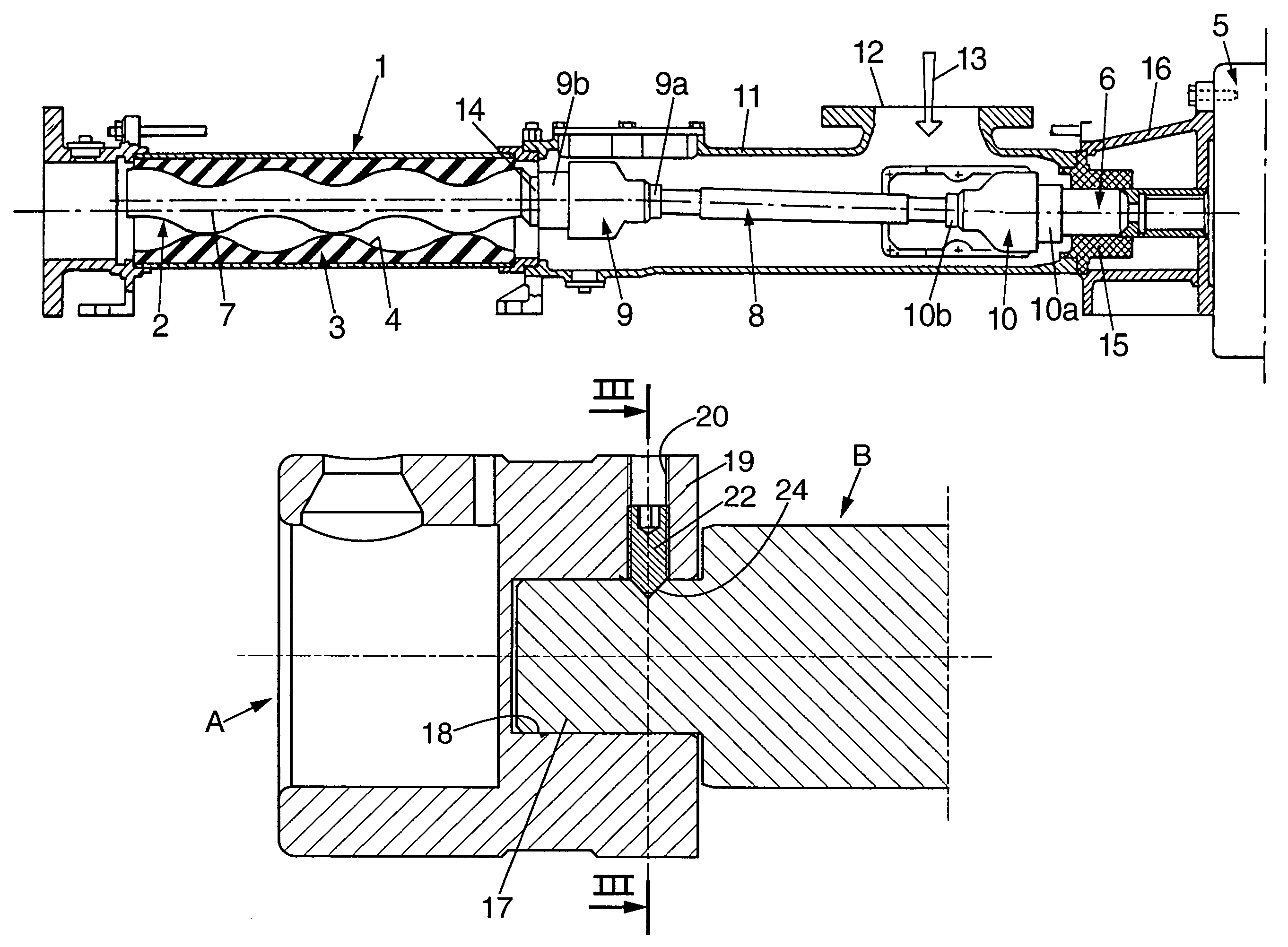Pumping system with progressive cavity pump
a cavity pump and progressive technology, applied in the direction of rotary piston engines, screws, engine lubrication, etc., can solve the problems of affecting the price, the weight of the device, the overdimension of the pin-jointed device, etc., and the correct operation of such a construction requires as little play as possibl
- Summary
- Abstract
- Description
- Claims
- Application Information
AI Technical Summary
Benefits of technology
Problems solved by technology
Method used
Image
Examples
Embodiment Construction
[0029]There now follows a description of the main provisions according to the invention with reference firstly and more particularly to FIG. 2. Although the provisions according to the invention can be implemented to secure any pair of devices A and B connected axially and rotation-wise in the rotary moving gear of the pump shown in FIG. 1 as will become more apparent later, it can be assumed, as an example and to give more definition to the ideas, that FIG. 2 shows (in reverse position relative to the representation of FIG. 1) the half-coupling 10b (device A) of the first articulated coupling 10 and the end of the intermediate shaft 8 (device B).
[0030]According to the invention, the two connected devices A, B are constructed in the form of a male device B including an axial stub 17 and a female device A including an axial housing 18 designed to receive said stub 17 without appreciable play. As can also be seen in FIGS. 3A and 3B, the lateral wall 19 defining said axial housing 18 o...
PUM
 Login to View More
Login to View More Abstract
Description
Claims
Application Information
 Login to View More
Login to View More - R&D
- Intellectual Property
- Life Sciences
- Materials
- Tech Scout
- Unparalleled Data Quality
- Higher Quality Content
- 60% Fewer Hallucinations
Browse by: Latest US Patents, China's latest patents, Technical Efficacy Thesaurus, Application Domain, Technology Topic, Popular Technical Reports.
© 2025 PatSnap. All rights reserved.Legal|Privacy policy|Modern Slavery Act Transparency Statement|Sitemap|About US| Contact US: help@patsnap.com



